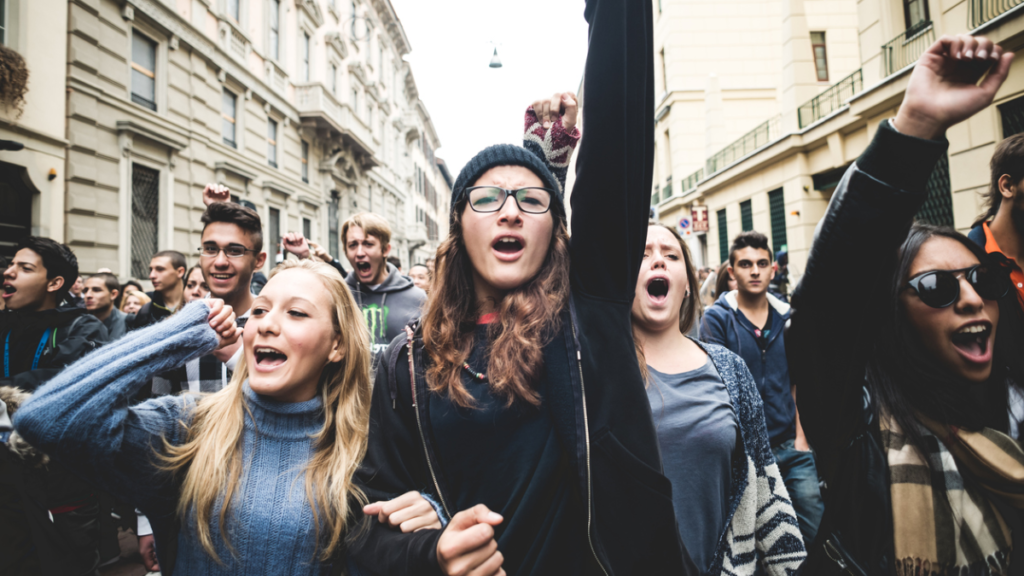The following is a guest post by Young Voices Advocate Alex Grass.
Last Friday, the Dean of Brooklyn Law School, Nicholas Allard, published an op-ed in The Hill that theorized a recent minor uptick in the number of law school applications was due to “the intense interest among many Millennials in issues of social justice and the urge to make a positive difference.”
More specifically, Dean Allard pointed to the hordes of attorneys and law students that packed airport terminals in January to provide counsel to visitors caught up in President Trump’s poorly conceived immigration ban. In the dean’s opinion, these activists inspired new law school applicants “like the generation inspired by Woodward and Bernstein to pursue careers in journalism.”
There are entrenched, systemic problems in legal education — over-valued sticker prices, nearly insurmountable student loan debt, curricular requirements that skimp on teaching real lawyering practices — that guarantee law school is a bad choice for many or most students. Dean Allard is making an emotional appeal, but the truth is that legal education is undergoing permanent changes. These changes mean that fewer students should go to law school, constitutional crisis or not.
Law school is a bad choice for many or most students.”]
Dean Allard points out that applications at his school, Brooklyn Law, rose “more than 12 percent over the previous year.” But perhaps the reason why law schools are accepting more applicants is because those applicants are massively underqualified compared to classes that came before them. The average LSAT score has been plummeting since 2010.
From 2010 to 2015, matriculants in the 170+ score range have plunged 44.4 percent, those in the 165-169 range have decreased 40.4 percent, those in the 160-164 range have dropped 36.8 percent, and on and on. To put a finer point on it: in five categories of LSAT takers, the only ones who are entering law school in higher numbers are the lowest scoring group (under 150).
Even top-tier schools are responding to the law school crisis by admitting more or less qualified students. But the percentage of students applying to Ivy-league and other top-tier law schools is still declining rapidly.
Even if, as Dean Allard imagines, future law students are ready to charge the gates in the name of social justice, they still have to pass the bar exam. With historically low pass rates at both the state and national level — only 43 percent passed California’s 2016 bar exam, for instance — many law school alumni won’t even become lawyers.
Dean Allard is begging for an injection of underqualified lawyers into a market whose growth has been steadily declining for decades. Or, as the Bureau of Labor Statistics puts it, “more students graduate from law school each year than there are jobs available.”
The dean has no proposal about what to do with the steadily growing pool of law students who can’t become attorneys. Instead, he offers hollow platitudes about how we’ve “lost sight of how critically relevant lawyers are to the social order,” and how there’s “precious little understanding of … the role lawyers play in bringing to fruition all the benefits of our constitutional guarantees.”
But law school deans will need more than purple prose to entice another generation of students who have learned that law school just isn’t a good deal for most of them.
Allard also argues that social justice-minded Millennials will be inspired to enter the market because they’ll want to defend the Constitution. But the number of attorneys who work in legal aid or as public defenders has hovered between 1 and 2 percent for decades. About 75 percent of lawyers work in small private practice firms, with an average firm size between 2-5 lawyers.
If harsh immigration enforcement is what supercharges the passions of would-be law students, where were they during the Obama administration? Other than the fact that Donald Trump is differently coiffed than the executive who preceded him, the Obama and Trump methods of immigration enforcement look rather similar. Once Trump is no longer president (which may well come before the incoming batch of law students even graduates) and the various constitutional crises subside, what will Allard’s social justice attorneys do?
Finally, seismic shifts in the industry make a headlong leap into legal practice foolhardy. Artificial intelligence promises to drive down the costs of many legal services that attorneys currently provide and to outright replace simpler jobs that lawyers used to do, like document review. Allard is right that we live in a “global, high-tech world,” but he fails to see that that world has responded to law schools’ longtime over-charging and under-training by creating new technologies that will “hollow out the job market for newly minted lawyers.” The population at-large will benefit from cheaper legal services. It seems unlikely then that many students would be willing to enroll in law school for upwards of $50,000 per year.Artificial intelligence promises to drive down the costs of many legal services.”]
So why would Dean Allard write what he did? Because it is part of a dean’s job to defend his institution and to encourage students to attend. Allard’s passion is admirable. It is also, unfortunately, part of the problem with the mindset of legal educators. Dean Allard shouldn’t put a gloss on what is a bad economic decision for most students by speaking high-mindedly about the Constitution. A person can still love the Constitution without having to go broke for it.



